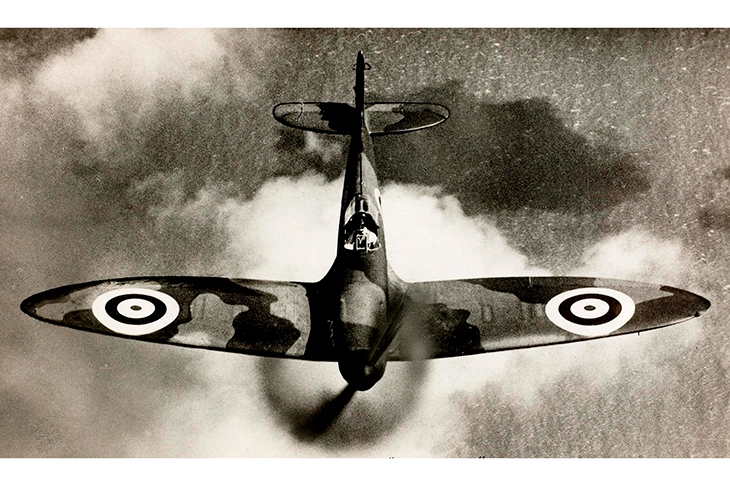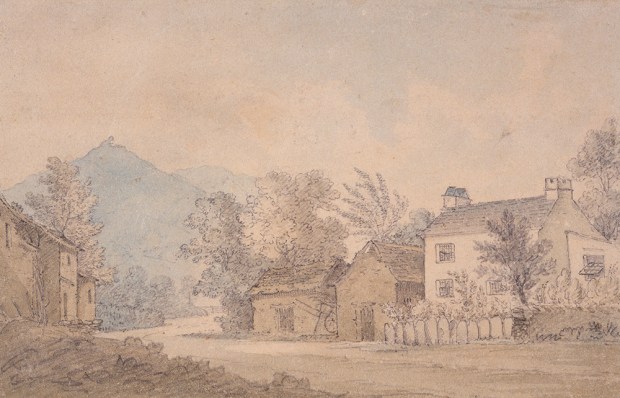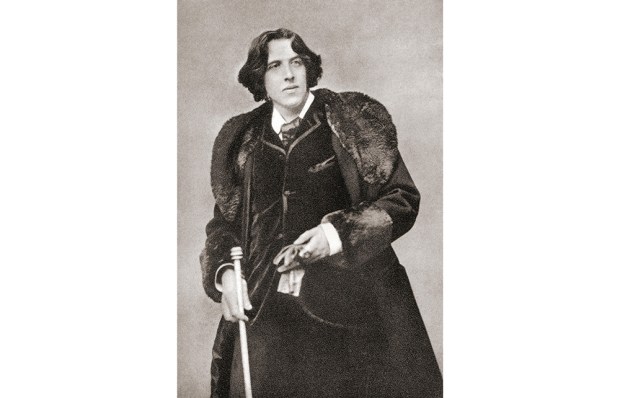Eighty years ago this summer Britain was facing its greatest moment of peril as Göring’s Luftwaffe attacked airfields, cities and convoys in a prelude to invasion. Nazi plans for us included all able-bodied men being sent to slave labour camps on the Continent. Thanks to the bravery of the RAF and the brilliance of their flying machines, the Battle of Britain saw Hitler beaten back in the first aerial campaign in history.
Graham Hoyland has written a stirring account of how these hand-wrought machines, geared for speed and encased in elegant airframes such as the Supermarine Spitfire’s ‘symphony of ellipses’, delivered us in 1940. He takes the story of the Merlin’s birth to power us through an astonishing 40-year history of flight, from the Kittyhawk’s 120 feet in 12 seconds in 1903 to the hapless Frank Whittle’s 1930s efforts to register interest in the jet engine.
At the heart of Merlin is the famous relationship between Henry Royce and Charles Rolls, the Steve Wozniak and Steve Jobs of the first global technological revolution. Royce was the diligent, workaholic engineer of humble stock who rated incremental improvements over inventions. He would take apart other manufacturers’ engines and work out how to make them better, as a child might do with a toy train. Novelty was abhorrent. In his words: ‘I invent nothing… inventors go broke.’
Charles ‘Dirty’ Rolls (an Etonian sobriquet for his love of the combustion engine) was the doomed aristocratic visionary who saw how Royce’s skills could blossom beyond winches and cranes. Rolls was also an early aviation pioneer. He bought one of the Wright brothers’ Model A flyers in 1909 and made more than 200 flights. The first man to make a non-stop double crossing of the Channel, he also holds the tragic record of being the first Briton to die in a powered aircraft accident.
Rolls had the salesmanship and connections to sell the Silver Ghost, the best car in the world, to the ‘best’ people. His clients included the headmaster of Eton (a retirement gift), King Leopold of Belgium, Stalin and Lenin, whose car was fitted with caterpillar tracks and skis and driven by the Tsar’s former chauffeur. Like the Merlin engine, its ancestor powering the Silver Ghost was endlessly adaptable because it was so finely engineered with high tolerances. T.E. Lawrence traversed the desert in his.
Hoyland is sharp about the clashes between government and private initiative: how governments could propel or stymie progress, and just how promiscuous and prolific the swapping of ideas and technology was. The ‘Red Flag’ Act of 1865 put the brakes on engine tech by limiting speeds to under 5 mph. The original 1907 Silver Ghost had an engine whose cylinders were constricted by taxation on horse-power, ‘setting back design by 40 years’, according to Hoyland. More serious still was the Dragonfly engine debacle in 1918, when thousands of untried, unfit engines were ordered for war, displacing other trusted manufacturers. Government mobilised the aviation industry far more effectively in the second world war: ‘The British had better planning, resourcing and direction.’
Each side had chances to inspect and learn from the other. In 1935 Rolls-Royce decided the British biplane was unsuitable, and shipped the Kestrel engine to Germany to be tested. The Germans put it in an Me 109 fighter and Stuka ‘for their own edification’. Rolls-Royce swapped engines with Germany for their testing factory, and the brilliant wing designer for Spitfire, Beverley Shenstone, spent time in Germany working with Junkers in Dessau. A Rolls-Royce Kestrel engine, one of Merlin’s precursors, was even moonlighting in the prototype Messerschmitt that flew past Hitler in the 1936 Berlin Olympics.
Speed became sexy in the 1920s. Private wealth drove on flight development, with media magnates, heiresses and arms dealers stumping up large cash prizes to compete in an aero-piston arms race. The Schneider Trophy for speed over water refocused Rolls-Royce’s attention on air after the first world war. The multi-millionairess patriot and widow Lady Lucy Houston, who funded the first high-altitude flights over Mount Everest, also underwrote costs for the Supermarine S6 Monoplane when a Depression-shy government cried off. The Spitfire’s parent plane won. Houston later trolled Ramsay Macdonald from her luxury yacht moored off Portsmouth when he turned down her millions to pay for 70 planes to defend London: ‘To Hell with the Traitor Macdonald!’ was picked out on board in lights.
Other women made vital contributions to the success of Merlin, in the air and on the production lines, also designing crucial parts that kept our fighters fast against the enemy. Women flew for the Air Transport Auxiliary between factories and aerodromes and made up a third of the factory workforce, as well as raising children and feeding the family. They were allowed to leave the Rolls-Royce Derby factory three minutes earlier than the men to get the supper ready.
The 166 female pilots who shepherded their charges were paid the same as the men — a national first — and the press loved them. The Canadian Elsie MacGill, ‘Queen of the Hurricanes’, had polio, but overcame her wheelchair with two metal crutches to drive on her 4,000-odd workers (half women) to make 1,400 Hurricanes. She’s celebrated forever in a stirring comic-book biography. The Spitfire’s name came from the company owner’s fond term for his feisty elder daughter, Annie —‘a right little Spitfire!’ The designer, RJ. Mitchell, had preferred Shrew — a narrow escape.
Merlin depicts a heroic age of smashed land, air and water speed records (at one point in the 1930s Rolls-Royce held all three) and the extreme bravery of those pioneers, who incurred many fatalities. Hoyland marries the drama and excitement with a clear focus on the technical: he puts you in the cockpit and into the very guts of the machines. There’s lots of engineering detail, and I just about managed to cling on, with my distant memories of motor mechanics classes from school. Anyone with a serious interest in engineering will find much to enjoy and appreciate. Speed, engine cooling and fuel quality were all crucial to Merlin’s success and the Allies’ early dominance in the air. Everything went wrong with it, but its sound foundations meant it could be continually improved. ‘In the end the German engines tended to blow up. The Merlin didn’t.’
Hoyland doesn’t avoid the awful consequences of air power, with a searing chapter on the infamous German Condor Legion, who used the Spanish civil war as an atrocious testing-bed to perfect the future Blitzkreig. The book is finally dedicated to all those who gave their lives in the pursuit of speed, and the hundreds of thousands of civilians who lost their lives in the infernos unleashed by the Rolls-Royce Merlin Avro Lancasters.
On a promethean note, Orville Wright reflected before his death in 1948:
No, I don’t have any regrets about my part in the invention of the airplane, though no one could deplore more than I do the destruction it has caused. I feel about the airplane much the same as I do in regard to fire.
Got something to add? Join the discussion and comment below.
Get 10 issues for just $10
Subscribe to The Spectator Australia today for the next 10 magazine issues, plus full online access, for just $10.
You might disagree with half of it, but you’ll enjoy reading all of it. Try your first month for free, then just $2 a week for the remainder of your first year.














Comments
Don't miss out
Join the conversation with other Spectator Australia readers. Subscribe to leave a comment.
SUBSCRIBEAlready a subscriber? Log in